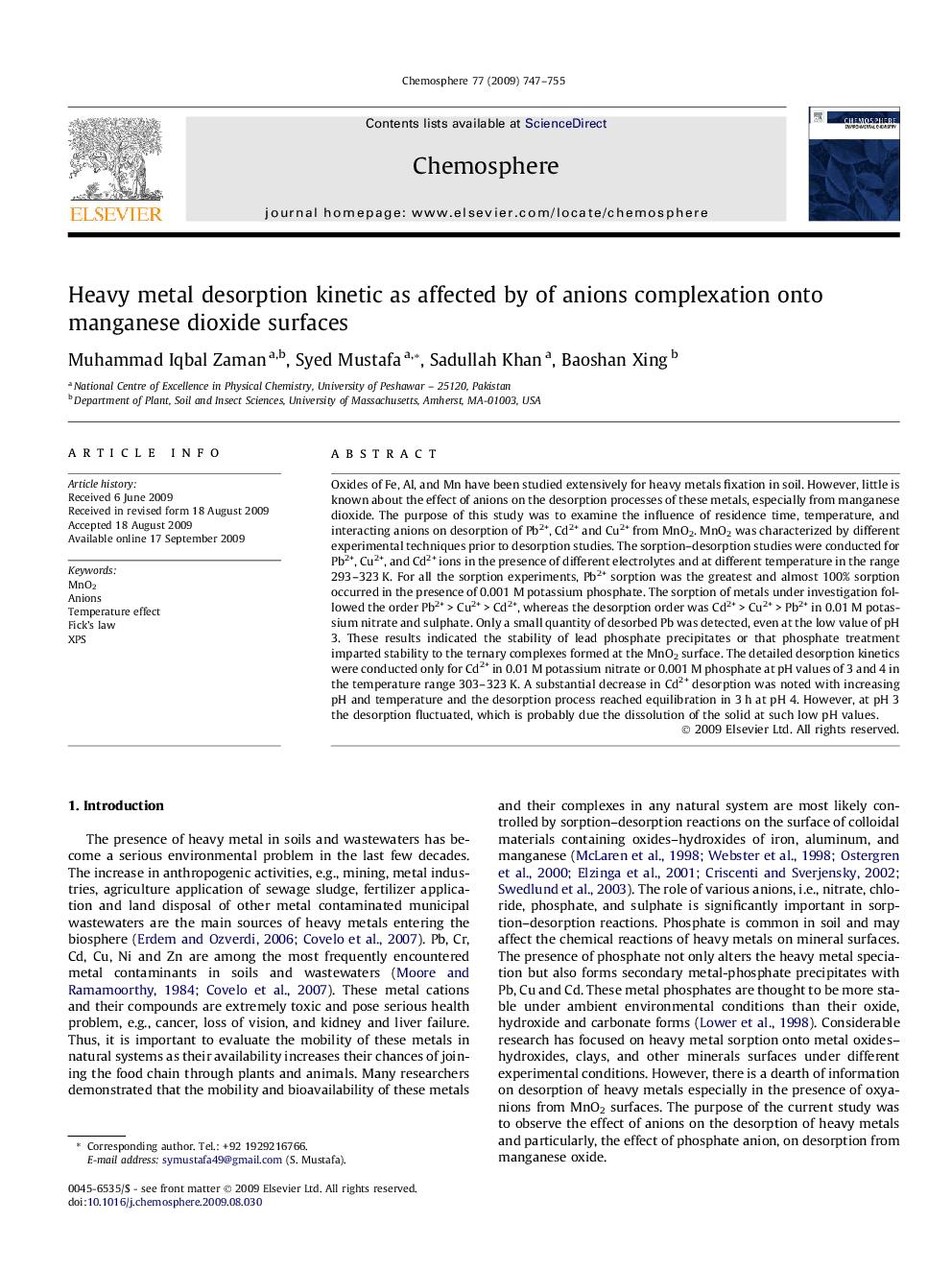| Article ID | Journal | Published Year | Pages | File Type |
|---|---|---|---|---|
| 4412575 | Chemosphere | 2009 | 9 Pages |
Abstract
Oxides of Fe, Al, and Mn have been studied extensively for heavy metals fixation in soil. However, little is known about the effect of anions on the desorption processes of these metals, especially from manganese dioxide. The purpose of this study was to examine the influence of residence time, temperature, and interacting anions on desorption of Pb2+, Cd2+ and Cu2+ from MnO2. MnO2 was characterized by different experimental techniques prior to desorption studies. The sorption-desorption studies were conducted for Pb2+, Cu2+, and Cd2+ ions in the presence of different electrolytes and at different temperature in the range 293-323Â K. For all the sorption experiments, Pb2+ sorption was the greatest and almost 100% sorption occurred in the presence of 0.001Â M potassium phosphate. The sorption of metals under investigation followed the order Pb2+Â >Â Cu2+Â >Â Cd2+, whereas the desorption order was Cd2+Â >Â Cu2+Â >Â Pb2+ in 0.01Â M potassium nitrate and sulphate. Only a small quantity of desorbed Pb was detected, even at the low value of pH 3. These results indicated the stability of lead phosphate precipitates or that phosphate treatment imparted stability to the ternary complexes formed at the MnO2 surface. The detailed desorption kinetics were conducted only for Cd2+ in 0.01Â M potassium nitrate or 0.001Â M phosphate at pH values of 3 and 4 in the temperature range 303-323Â K. A substantial decrease in Cd2+ desorption was noted with increasing pH and temperature and the desorption process reached equilibration in 3Â h at pH 4. However, at pH 3 the desorption fluctuated, which is probably due the dissolution of the solid at such low pH values.
Related Topics
Life Sciences
Environmental Science
Environmental Chemistry
Authors
Muhammad Iqbal Zaman, Syed Mustafa, Sadullah Khan, Baoshan Xing,
